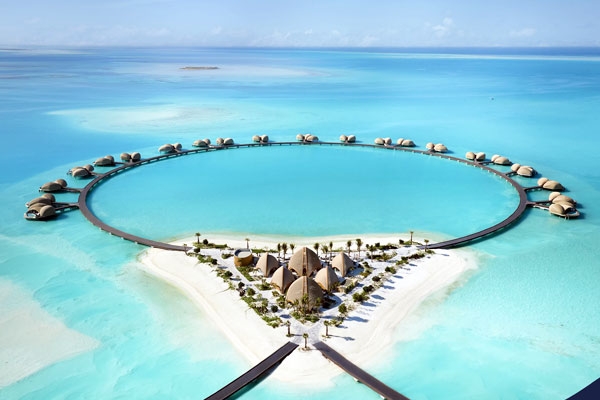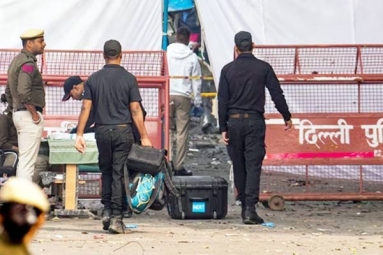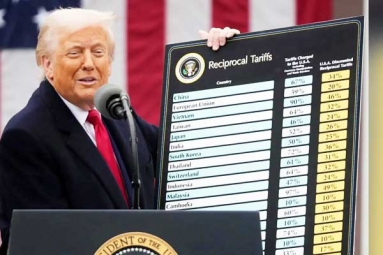
(Image source from: x.com/RedSeaGlobal)
For many years, Saudi Arabia kept its doors shut to anyone who was not a Muslim. The country did not issue tourist visas to non-Muslims. People could only visit to see the sacred places in Mecca and Medina. However, this changed in 2019. Crown Prince Mohammed Bin Salman chose to welcome tourists, and since then, Saudi Arabia has been at a fascinating turning point. It is balancing two very different groups: religious travelers who seek modest experiences and luxury holidaymakers in swimsuits wanting to relax by the pool while enjoying non-alcoholic cocktails. Saudi Arabia is still figuring out how to please both groups without conflicts arising between them. Currently, the kingdom does not permit alcohol. The tourism board believes it can attract people with its rich history, culture, and welcoming people, making alcohol the last thing on visitors' minds. Nevertheless, there are whispers that alcohol may soon be permitted, as a liquor shop for non-Muslim diplomats has recently opened in the capital, Riyadh.
“At this non-alcoholic bar at the St Regis Red Sea resort, our ‘bartender’ jokingly said, ‘If you really try hard, you might feel a buzz from this kombucha after a year.’” The Red Sea Project, located on the country’s western shore, is known as “the most ambitious regenerative tourism destination in the world.” A brief flight took us from Riyadh to the Red Sea airport, which is a private terminal now accommodating a few commercial flights each day. Once we exited the small terminal, a specially designed Mercedes van transported us to the private boat terminal at the Red Sea Project. This is known as the Red Sea Welcome Centre. The Red Sea area features two types of tourist vehicles: customized Mercedes-Benz and Lucid sedans for travelers, and Toyota Hilux trucks for ongoing construction work in the region. Tourism is a major part of Saudi Arabia's Vision 2030 plan, and the Red Sea project is a top priority. According to initial projections, the kingdom plans to invest USD 1 trillion in the Red Sea by 2035, with a third of that amount already invested in development. Saudi Arabia aims to attract hundreds of thousands of tourists to its west coast, where the Red Sea boasts an archipelago of 90 islands.
Saudi Arabia is aiming to develop a resort similar to the Maldives within its own territory, boasting temperatures that could be just as pleasant or even better. For example, in late April, during a visit to the Red Sea by this writer, the temperature was a comfortable 24 degrees. Meanwhile, back in Delhi, the temperature was consistently around 45 degrees Celsius that same week. From the Red Sea Welcome Centre, which features a specific section for those interested in buying apartments in the region, we were taken by a luxury speedboat to our destination: the beautiful new St Regis Red Sea. We enjoyed coffee in special cups that float, along with pastries and fresh fruits as we traveled across the Red Sea towards our resort. Along the way, the shining islands of Shebara appeared in the distance. When the boat sliced through the water and arrived at the St Regis, it felt like stepping into the Maldives. The sky was a bright blue, the water looked inviting, the sand dunes of Arabia felt far away, and my 'dune' villa, shaped like its namesake, showcased an extraordinary level of luxury.
Saudi Arabia has invested heavily in the Red Sea, and it shows. The Red Sea is home to untouched reefs and diverse marine life, all of which Saudi aims to transform into world-class attractions. By 2030, there are plans for fifty new luxury resorts to line the Red Sea coast. Among the few that are already open, St Regis Red Sea stands out for its commitment to sustainability, according to the resort’s claims. The most affordable villas start at Rs 2.5 lakh for two people, plus another lakh for the speedboat ride, making it clear who their target customers are. Saudi Arabia's focus on tourism is also intended to showcase a different aspect of the country, one that goes beyond just the religious sites of Mecca and Medina. Is Saudi’s grand tourism project succeeding? The evidence suggests it might be. In 2023, the nation welcomed 23 million international tourists, which contributed around 4% to its GDP. In 2024, that figure climbed to 29.7 million. The assertive marketing strategies, partnerships with global celebrities like Cristiano Ronaldo, and an established tourism authority aimed at attracting the wealthy have proven effective.
The Saudi Arabia that luxury travelers experience is quite different and carefully shielded from its religious aspects. This contrast is genuine, yet it's not visible to visitors. While relaxing on your high-quality bedsheet and gazing at the infinity pool that blends into the Red Sea, life feels extraordinary. In Saudi Arabia, luxury takes on a new definition. Everyone has seen how rich the country is and what they choose not to spend money on, but you need to be there to truly witness it.
The St Regis Red Sea promotes itself with the slogan "Luxury Without Limits," which couldn’t be more accurate in this region. The resort is nestled on a private island that can only be accessed by seaplane or speedboat. It enjoys a hidden spot within the Red Sea project. The 90 villas on the property, both overwater and beachfront, feature private pools and generous space. The beachfront villas are designed with sea-inspired elements that connect with nature, featuring interiors that bring the outdoors inside. The unique designs come from the renowned Japanese architect Kengo Kuma. Kuma’s philosophy of connecting architecture with nature is evident at the St Regis Red Sea.
Outside, the gentle curves mimic a sand dune, while inside the villa, the ocean feels present. The ocean and sand are everywhere. Closing the bedroom doors transforms it into a dreamy underwater space reminiscent of Ariel’s world, surrounded by countless shades of blue and green as the waves outside gently rock you to sleep. When you wake up, the resort offers numerous activities to explore: enjoy outdoor pools, a fitness center, a spa, and a children’s club; plus, there are several dining options like Nesma, Gishiki 45, Tilina, The Beach Club, and The St Regis Bar (which has every non-alcoholic drink available in Saudi Arabia). The resort also organizes various inland and underwater excursions. Just mention your requests to your personal butler, and they will handle everything.
After visiting the Welcome Centre, we took a 45-minute journey to our next destination: the Six Senses Southern Dunes, which is the first of two inland resorts at the Red Sea Project (the second one is the Desert Rock, a luxury hotel with 60 keys). The location of Six Senses is exceptional. Perched on a hilltop, the resort offers stunning views of the Red Sea, with colorful canyons stretching for miles. The architecture of the property pays tribute to Saudi Arabia's Nabatean heritage, the Hijaz mountains, and the timeless desert landscape. Along with the brand’s well-known wellness concepts, this creates a place that provides nearly everything and beyond. A sense of wonder fills you as you arrive at the Six Senses Southern Dunes.
A plain rock carving featuring the six dots logo of Six Senses signals the entrance to the premises, and as the doors open, you are presented with a sight that appears to be from another world.
Points and cables and a huge desert bloom that escapes description. This is what the Six Senses refers to as 'The Oasis', a fitting title. The woven roof structure lowers the temperature slightly when compared to the external environment, providing a cool escape from the intense desert heat when walking beneath it. Six Senses Southern Dunes comprises 36 rooms and suites along with 40 luxurious villas, distributed across five distinct categories. Foster + Partners, a British architectural firm, opted for light construction materials, decreasing reliance on mechanical cooling systems. The resort's distinguished dining options and the swimming pool are situated at the property's peak, offering spectacular sunset panoramas. Inside the rooms, the design of everything, including the rugs and beds, harmonizes with the external desert and mountainous landscape. The tea service items are sculpted from a pale black stone. A generous supply of one hundred date sweets serves as complimentary refreshments. Freestanding stone bathtubs elevate bathing into a true experience, offering vast canyon vistas to enjoy along with a miniature wooden duck as a companion. The degree of personalization and meticulous detailing is evident in every moment you spend here. During the evening turndown service, the Six Senses personnel, having learned of our plans for the following day, noticed a book on my nightstand. They added a bookmark. It included a minor note, presented in both English and Arabic, providing details about the next destination we were planning to visit. There is nothing lacking at Six Senses. Just a singular experience that filled me with immense pleasure.
Six years of experiencing Arabia have demonstrated to tourists the characteristics of Saudi generosity. At Red Sea, one can observe the kingdom's most recent innovations in providing luxury. A level of luxury that knows no boundaries. After arriving at the Red Sea airport, each of the individual resorts assumes responsibility for transportation, either by speedboat or seaplane. Indian citizens holding valid tourist or business visas from the United States, United Kingdom, or Schengen countries, and that have been previously used, are permitted to apply for an electronic visa or obtain a visa upon arrival. For Indian tourists not fulfilling the requirements for an e-visa or visa on arrival, formal visa requests can be submitted through Tasheer Visa Centres situated throughout India.







